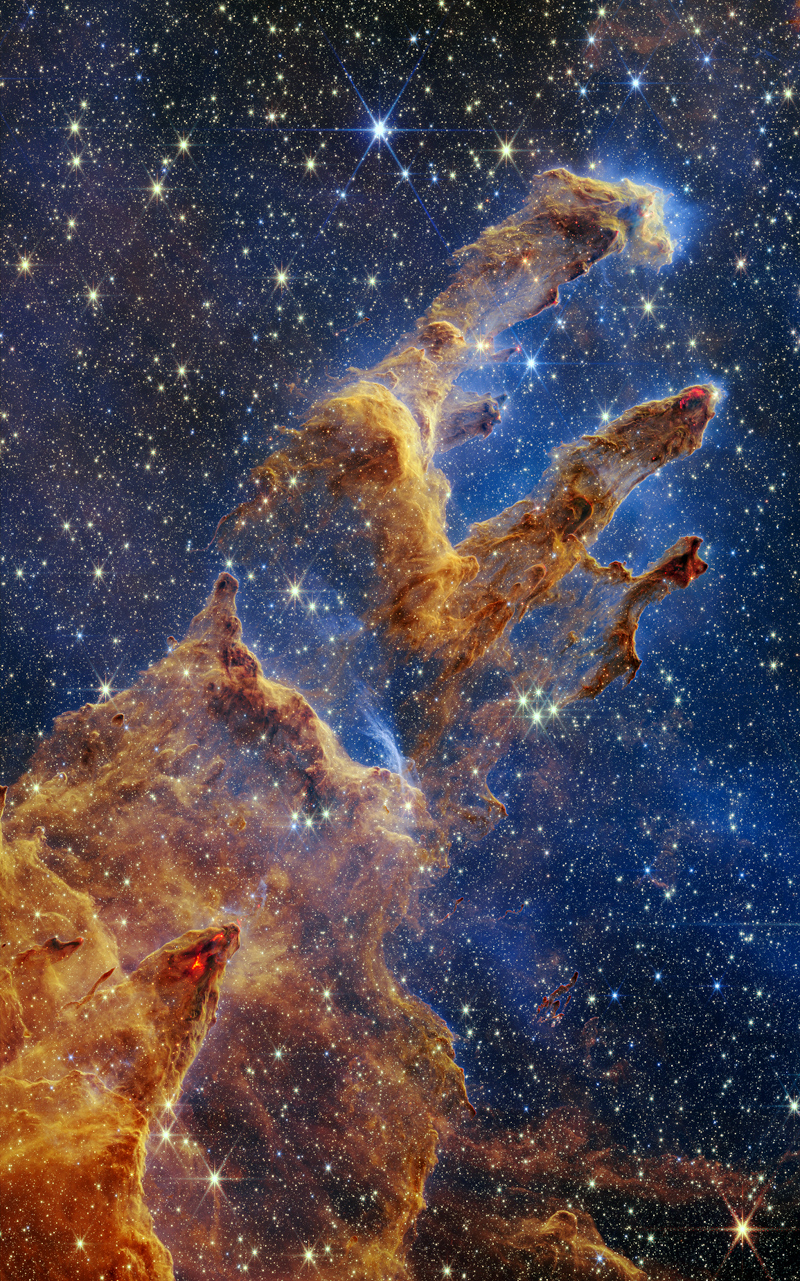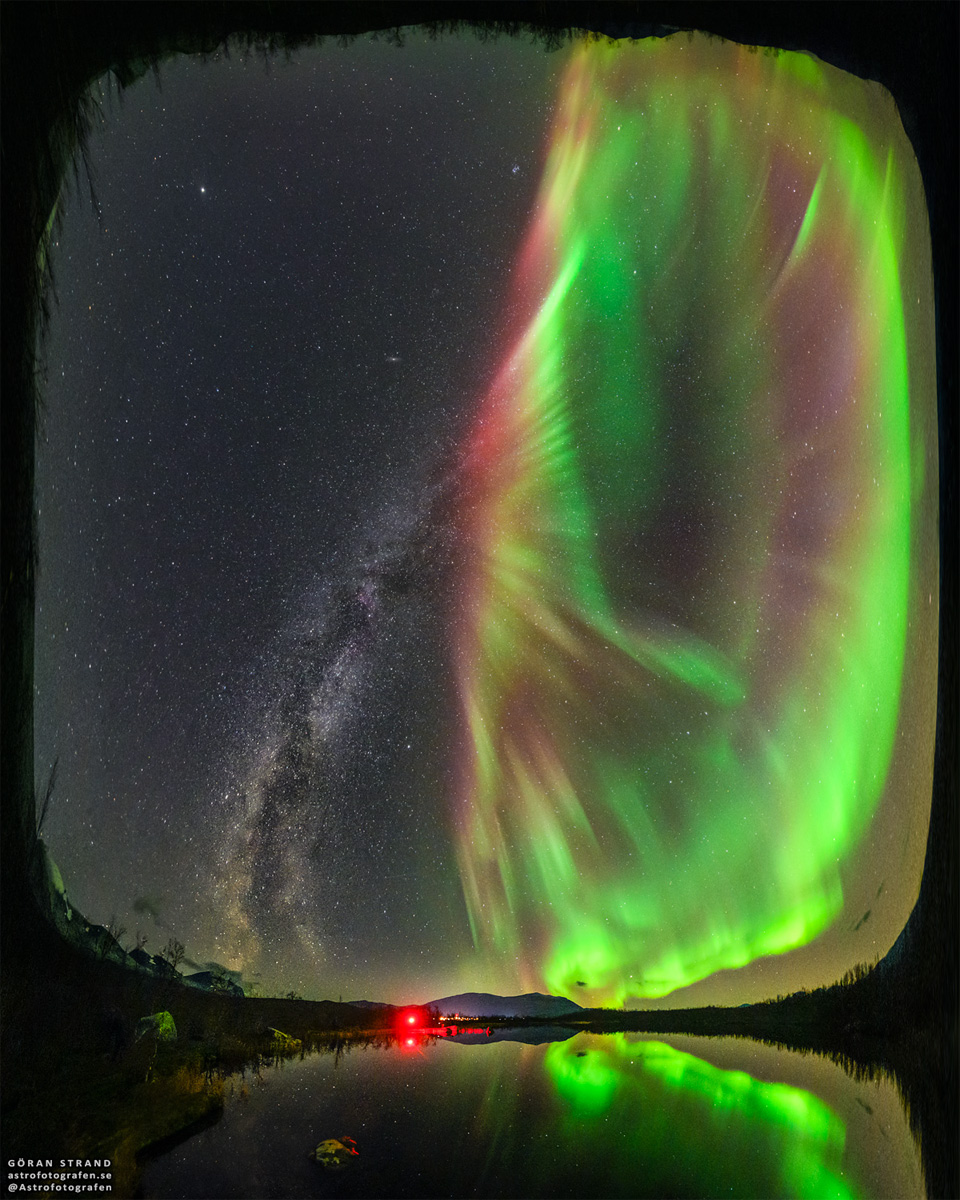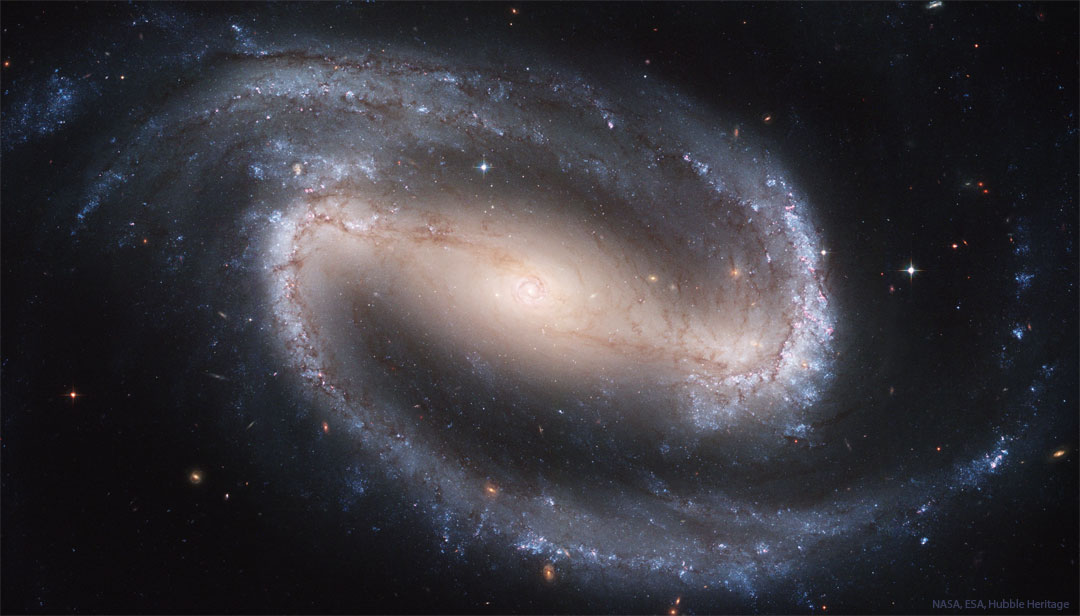Nombre total de pages vues
26/10/2022
ASTRONOMIE - Mars arrive !
ASTRONOMY - Jupiter Rotates as Moons Orbit
2022 October 25
Video Credit & Copyright: Makrem Larnaout
Explanation: Jupiter and its moons move like our Sun and its planets. Similarly, Jupiter spins while its moons circle around. Jupiter’s rotation can be observed by tracking circulating dark belts and light zones. The Great Red Spot, the largest storm known, rotates to become visible after about 15 seconds in the 48-second time lapse video. The video is a compilation of shorts taken over several nights last month and combined into a digital recreation of how 24-continuous hours would appear. Jupiter's brightest moons always orbit in the plane of the planet's rotation, even as Earth’s spin makes the whole system appear to tilt. The moons Europa, Ganymede, and Io are all visible, with Europa's shadow appearing as the icy Galilean moon crosses Jupiter's disk. Jupiter remains near opposition this month, meaning that it is unusually bright, near to its closest to the Earth, and visible nearly all night long.
24/10/2022
ASTRONOMY - Milky Way and Zodiacal Light over Australian Pinnacles
2022 October 23
Image Credit & Copyright: Jingyi Zhang
Explanation: What strange world is this? Earth. In the foreground of the featured image are the Pinnacles, unusual rock spires in Nambung National Park in Western Australia. Made of ancient sea shells (limestone), how these human-sized picturesque spires formed remains a topic of research. The picturesque panorama was taken in 2017 September. A ray of zodiacal light, sunlight reflected by dust grains orbiting between the planets in the Solar System, rises from the horizon near the image center. Arching across the top is the central band of our Milky Way Galaxy. The planets Jupiter and Saturn, as well as several famous stars are also visible in the background night sky.
22/10/2022
ASTRONOMY - Pillars of Creation
2022 October 20
Image Credit: Science - NASA, ESA, CSA, STScI, NIRCam
Processing - Joseph DePasquale (STScI), Anton M. Koekemoer (STScI), Alyssa Pagan (STScI)
Explanation: A now famous picture from the Hubble Space Telescope featured these star forming columns of cold gas and dust light-years long inside M16, the Eagle Nebula, dubbed the Pillars of Creation. This James Webb Space Telescope NIRCam image expands Hubble's exploration of that region in greater detail and depth inside the iconic stellar nursery. Particularly stunning in Webb's near infrared view is the telltale reddish emission from knots of material undergoing gravitational collapse to form stars within the natal clouds. The Eagle Nebula is some 6,500 light-years distant. The larger bright emission nebula is itself an easy target for binoculars or small telescopes. M16 lies along the plane of our Milky Way galaxy in a nebula rich part of the sky, toward the split constellation Serpens Cauda (the tail of the snake).
19/10/2022
MERVEILLEUX MONDE SOUS-MARIN - La baleine à bosse - Megaptera novaeangliae
ASTRONOMY - A Galaxy Beyond Stars, Gas, Dust
2022 October 19
Image Credit & Copyright: Howard Trottier; Text: Emily Rice
Explanation: Do we dare believe our eyes? When we look at images of space, we often wonder whether they are "real", and just as often the best answer varies. In this case, the scene appears much as our eyes would see it, because it was obtained using RGB (Red, Green, Blue) filters like the cone cells in our eyes, except collecting light for 19 hours, not a fraction of a second. The featured image was captured over six nights, using a 24-inch diameter telescope in the Sierra Nevada Mountains, in California, USA. The bright spiral galaxy at the center (NGC 7497) looks like it is being grasped by an eerie tendril of a space ghost, and therein lies the trick. The galaxy is actually 59 million light years away, while the nebulosity is MBM 54, less than one thousand light years away, making it one of the nearest cool clouds of gas and dust -- galactic cirrus -- within our own Milky Way Galaxy. Both are in the constellation of Pegasus, which can be seen high overhead from northern latitudes in the autumn.
18/10/2022
AVIATION IMAGINEE - Des ballons gonflables pour marcher sur l'eau
ASTRONOMY - Milky Way Auroral Flower
2022 October 18
Image Credit & Copyright: Göran Strand
Explanation: Could the stem of our Milky Way bloom into an auroral flower? No, not really, even though it may appear that way in today’s featured all-sky image. On the left, the central plane of our home galaxy extends from the horizon past the middle of the sky. On the right, an auroral oval also extends from the sky's center -- but is dominated by bright green-glowing oxygen. The two are not physically connected, because the aurora is relatively nearby, with the higher red parts occurring in Earth's atmosphere only about 1000 kilometers high. In contrast, an average distance to the stars and nebulas we see in the Milky Way more like 1000 light-years away - 10 trillion times further. The featured image composite was taken in early October across a small lake in Abisko, northern Sweden. As our Sun's magnetic field evolves into the active part of its 11-year cycle, auroras near both of Earth's poles are sure to become more frequent.
17/10/2022
MACROPHOTOGRAPHIE - Miki Asai -Lorsque deux mondes se rejoignent
16/10/2022
ASTRONOMY - Barred Spiral Galaxy NGC 1300
2022 October 16
Image Credit: NASA ESA, Hubble Heritage
Explanation: Across the center of this spiral galaxy is a bar. And at the center of this bar is smaller spiral. And at the center of that spiral is a supermassive black hole. This all happens in the big, beautiful, barred spiral galaxy cataloged as NGC 1300, a galaxy that lies some 70 million light-years away toward the constellation of the river Eridanus. This Hubble Space Telescope composite view of the gorgeous island universe is one of the most detailed Hubble images ever made of a complete galaxy. NGC 1300 spans over 100,000 light-years and the Hubble image reveals striking details of the galaxy's dominant central bar and majestic spiral arms. How the giant bar formed, how it remains, and how it affects star formation remains an active topic of research.
SANTé/MEDECINE - CANCER - 12 AVANCEES REVOLUTIONNAIRES - 4. Une médecine de précision qui s’adapte à l’ADN du patient
La médecine de précision, ou oncologie de précision, est une nouvelle méthode qui adapte les traitements à la génétique exacte de la tumeur ...

-
2022 September 26 All the Water on Planet Earth Illustration Credit: Jack Cook, Adam Nieman, Woods Hole Oceanographic Institution ; Data ...
-
2025 May 11 The Surface of Venus from Venera 14 Image Credit: Soviet Planetary Exploration Program , Venera 14 ; Processing & Copyri...








